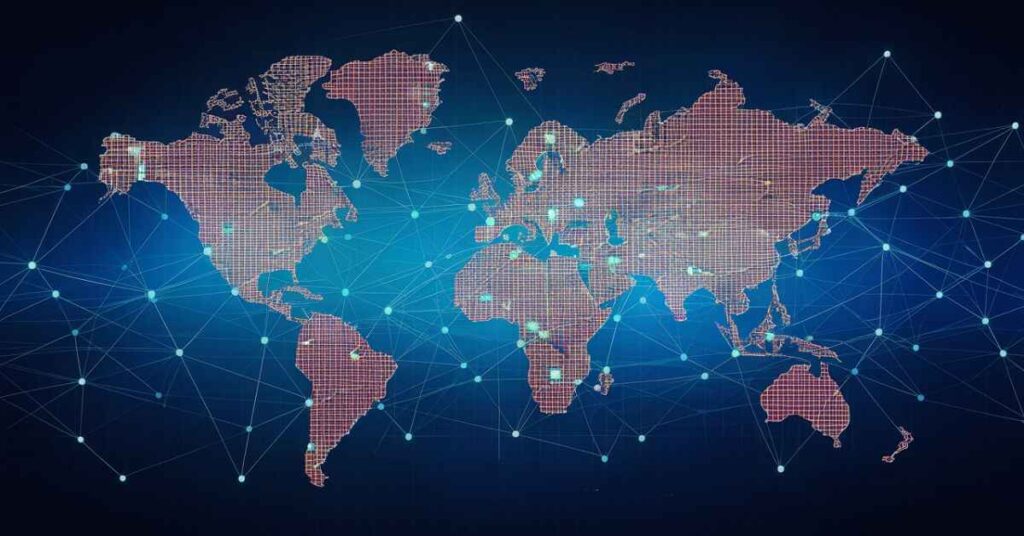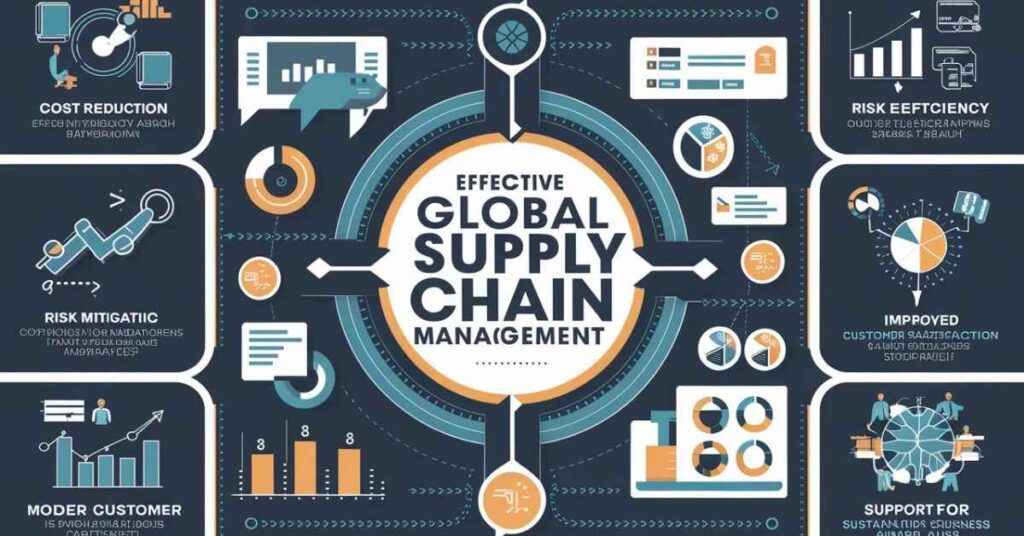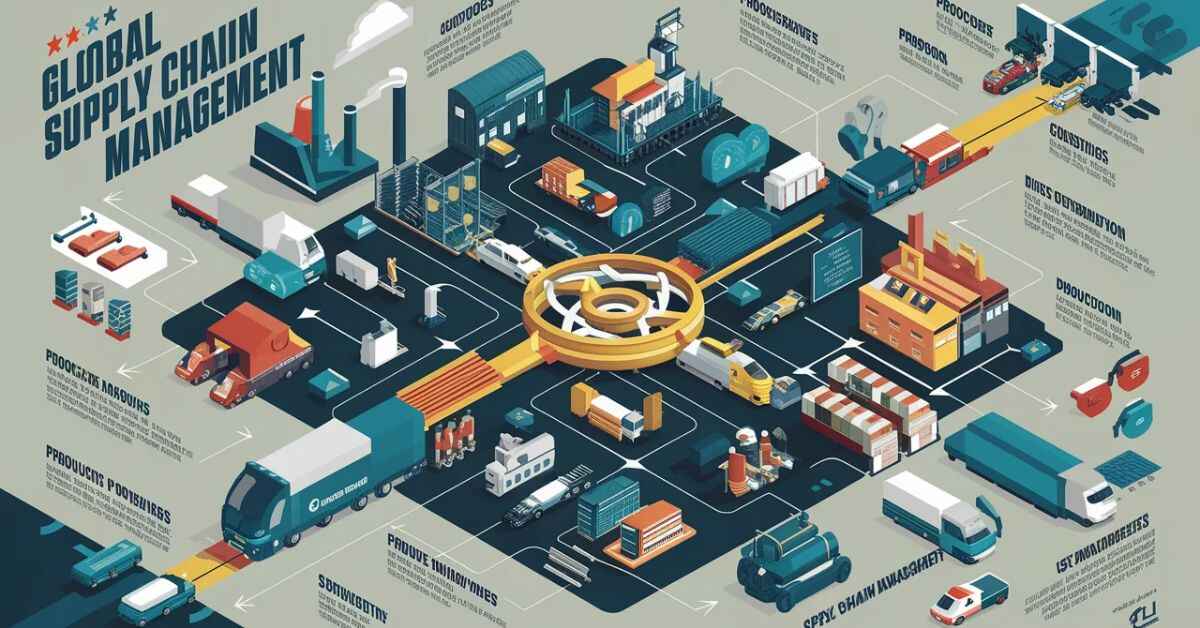In today’s interconnected world, efficient global supply chains are the backbone of international trade and commerce. Global Supply Chain Management (GSCM) refers to the oversight and coordination of the complex network of activities involved in sourcing raw materials, manufacturing products, and delivering finished goods to customers across multiple countries and continents.
The primary objective of GSCM is to streamline the flow of goods, information, and finances across this global network, ensuring that products reach their destinations in a timely, cost-effective, and reliable manner.
The Evolution of Global Supply Chains
Store network the executives has its underlying foundations in the post-The Second Great War time, when organizations started to investigate more proficient ways of dealing with the creation and dissemination of products. In any case, the genuine globalization of supply chains didn’t get some momentum until the late twentieth 100 years, driven by a few key elements:
- Technological Advancements: The upswing of the internet, advanced logistics systems, and communication skills allowed real-time bringing together and data conversation across vast remoteness.
- Economic Liberalization: The decrease of trade obstacles and the formation of free line of work agreements helped the drive of goods, services, and capital across limitations.
- Outsourcing and Offshoring: In recreation of cost savings and access to specified skills, enterprises began to subcontract manufacturing and other procedures to countries with minor labor costs or particular skill.
- Changing Consumer Demands: Globalization and the spread of data filled buyer interest for a more extensive assortment of items from around the world, provoking organizations to extend their obtaining and circulation organizations.
Accordingly, supply chains that were once limited or provincial in nature advanced into complex, around the world coordinated networks spreading over various nations and landmasses.
Key Components of Global Supply Chain Management
Operational global supply chain management includes management across numerous interrelated components:

- Global Sourcing: locating and securing dependable suppliers of finished goods, components, or raw materials from various nations and regions worldwide.
- International Manufacturing/Production: Laying out or re-appropriating producing offices in essential areas to exploit cost investment funds, gifted work, or vicinity to business sectors.
- Freight Transportation: Getting products across worldwide lines by means of different methods of transportation, like air, ocean, rail, or shipping, and exploring complex traditions and exchange guidelines.
- Warehousing and Distribution Centers: keeping a worldwide organization of decisively positioned stockrooms and conveyance focuses to work with compelling merchandise stockpiling and diffusion.
- Last-Mile Delivery: teaming up with neighborhood coordinated operations suppliers or satisfaction focuses to guarantee smooth item conveyance to end clients in various countries.
Planning these parts across numerous nations, societies, and administrative conditions is a critical test, however one that effective worldwide organizations should defeat to stay cutthroat.
Read this Blog: Why ESG Is a Game-Changer for Modern Supply Chains
Challenges in Managing Global Supply Chains
Global supply chain management has many advantages, but it also has unique challenges that must be carefully navigated:
- Cultural and Linguistic Differences: Working across different societies and dialects can prompt miscommunications, false impressions, and clashes that can upset store network activities.
- Regulatory and Trade Compliance: It can be a significant burden to navigate the intricate web of international trade regulations, tariffs, customs procedures, and compliance requirements.
- Longer Lead Times and Disruption Risks: Worldwide stock chains include longer distances and more expected places of disturbance, like cataclysmic events, political insecurity, or transportation delays, which can influence conveyance times and dependability.
- Quality Control Challenges: Keeping up with predictable quality principles across an internationally scattered organization of providers, makers, and coordinated operations suppliers can be troublesome.
- End-to-End Visibility and Traceability Issues: Accomplishing continuous deceivability and discernibility across the whole worldwide inventory network, from obtaining to definite conveyance, can be a critical test, especially while depending on different accomplices and frameworks.
Defeating these difficulties requires strong systems, trend setting innovations, and close coordinated effort among all partners in the worldwide production network.
Strategies for Effective GSCM
To successfully oversee worldwide inventory chains and moderate the related difficulties, organizations utilize a scope of methodologies:
Supply Chain Digitization and Automation
Leveraging innovative technologies is critical for improving global supply chain operations. Some key digital solutions include:
- Artificial Intelligence (AI) and Machine Learning: These technologies can be used for predictive demand forecasting, optimizing production schedules, and identifying potential disruptions or inefficiencies.
- Internet of Things (IoT): Deploying connected sensors and devices throughout the supply chain enables real-time tracking and monitoring of goods, assets, and environmental conditions.
- Block chain: Distributed ledger technology can enhance transparency, traceability, and trust among supply chain partners by creating an immutable record of transactions and events.
- Analytics and Big Data: Analyzing vast amounts of supply chain data can reveal valuable insights for improving processes, reducing costs, and making more informed decisions.
Implementation of digital transformation, corporations can achieve grander visibility, agility, and awareness in their global supply chain processes.
Strategic Sourcing and Supplier Management
Building a vigorous worldwide provider network is basic for guaranteeing a solid and practical stock of materials and parts. This includes:

- Identifying and Evaluating Potential Suppliers: Conducting thorough research and due diligence to assess suppliers’ capabilities, quality standards, financial stability, and compliance with relevant regulations.
- Managing Supplier Relationships and Performance: Establishing clear expectations, monitoring supplier performance, and fostering collaborative relationships to drive continuous improvement.
- Negotiating Favorable Terms and Pricing: Leveraging global sourcing opportunities and strategic negotiations to secure competitive pricing, lead times, and contract terms.
In addition to optimizing costs, efficient supplier management also reduces the risks of poor quality, delivery delays, and supply disruptions.
Optimized Logistics and Distribution
For products to be delivered to customers all over the world in a timely and cost-effective manner, efficient logistics and distribution are essential. Methodologies incorporate:
- Streamlining International Freight and Customs Processes: Partnering with experienced logistics providers, leveraging free trade agreements, and implementing customs compliance measures to minimize delays and extra costs.
- Deploying Optimized Distribution Networks: Strategically locating distribution centers and leveraging multi-modal transportation (air, sea, rail, and trucking) to minimize transportation costs and lead times.
- Implementing Lean Practices: Adopting lean methodologies like just-in-time delivery, cross-docking, and vendor-managed inventory to reduce waste, improve efficiency, and enhance responsiveness to customer demand.
Companies can significantly cut transportation costs, speed up delivery times, and increase customer satisfaction in global markets by optimizing logistics and distribution.
Collaboration and Integration
Viable worldwide store network the board requires close joint effort and coordination among all partners, including providers, producers, planned operations suppliers, and clients. This includes:
- Aligning Processes and Systems: Ensuring seamless integration and interoperability of processes, systems, and data flows among supply chain partners.
- Sharing Data and Enabling Transparency: Establishing secure platforms for sharing real-time data and information to enhance visibility, coordination, and decision-making across the supply chain.
- Fostering Communication and Trust: Building strong relationships and open communication channels with supply chain partners to promote trust, accountability, and collaborative problem-solving.
Companies can create a global supply chain network that is more cohesive, responsive, and resilient by encouraging greater integration and collaboration..
Benefits of Effective Global Supply Chain Management
Carrying out successful worldwide inventory network the board methodologies can convey various advantages for organizations, including:

Cost Optimization and Competitive Pricing:
Companies can cut operational costs and provide customers with pricing that is more competitive by taking advantage of global sourcing opportunities, optimizing logistics and distribution networks, and streamlining processes.
Improved Efficiency, Agility, and Responsiveness
Companies are able to respond to shifting market conditions, customer demands, and potential disruptions more quickly thanks to digitized supply chains, lean practices, and collaborative partnerships.
Mitigated Risks and Reduced Disruptions:
Powerful provider the board, start to finish perceivability, and proactive gamble moderation systems assist with limiting the effect of store network interruptions, guaranteeing coherence of activities.
Enhanced Customer Satisfaction Globally:
Companies can increase customer loyalty and take advantage of global market opportunities by timely and dependable product delivery to customers in different nations.
Sustainability and Ethical Sourcing Advantages:
Worldwide store network perceivability and coordinated effort empower organizations to carry out feasible practices, screen ecological effects, and guarantee moral obtaining of materials and work across their stock organizations.
In the present serious worldwide commercial center, viable worldwide store network the board is as of now not simply an upper hand – it’s a need for organizations looking to flourish and stay strong.
Conclusion
Worldwide store network the executives is a perplexing and testing try, however one that is fundamental for organizations working in the present interconnected worldwide economy. By grasping the key parts, difficulties, and techniques illustrated in this article, organizations can situate themselves for progress in dealing with their worldwide production network activities.
Adopting digital transformation, fostering strategic partnerships, optimizing logistics and distribution networks, and encouraging relationship and incorporation among all stakeholders are all necessary steps on the path to mastering GSCM. It requires a promise to ceaseless improvement, flexibility, and a readiness to explore the intricacies of working across different societies, guidelines, and geological limits.
By remaining in front of these patterns and persistently refining their worldwide production network methodologies, organizations can situate themselves as pioneers in their separate businesses, conveying uncommon worth to clients overall while driving long haul development and benefit.


![Find a Section 8 houses for rent with no deposit Revealed! [2024]](https://busslirra.com/wp-content/uploads/2024/08/Find-a-Section-8-houses-for-rent-with-no-deposit-Revealed-2024-300x157.jpg)







![Find a Section 8 houses for rent with no deposit Revealed! [2024]](https://busslirra.com/wp-content/uploads/2024/08/Find-a-Section-8-houses-for-rent-with-no-deposit-Revealed-2024-150x150.jpg)
